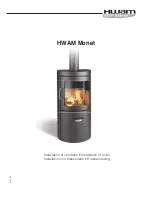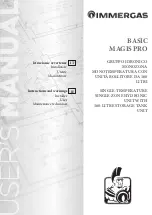
Expansion vessels should be connected to the system at a point close to the pump inlet
in order to maintain positive pressure throughout the system.
The central heating system should be in accordance with the recommendations given in
BS. 6798 and BS. 5449.
20.2 Hydraulic Resistance
The integral boiler pump is designed to provide an adequate flow rate through the boiler
at all times. Therefore, if an additional duty pump is to be fitted to the system, the boiler
resistance can be ignored.
20.3 Condensate Drain
The condense discharge pipe should be continued in ¾ inch
plastic waste pipe
into the
household drainage system or out through the wall to an existing gully or soak away. To
minimise the risk of freezing all condensate waste pipe-work fitted externally should be
32mm. (The existing drainage system should be corrosion resistant).
In order to avoid damage to the boiler caused by a blocked drainage system, the
condense disposal pipe should
include a tundish
. In these cases the pipe-work
connected to the internal household drainage system should be fitted with a deep seal
running trap.
Horizontal runs of condense discharge pipe must fall at a rate of 40mm per metre and
any external sections of pipe must be protected against the risk of freezing. Due care
should be taken when installing the condensate disposal system to minimise the risk of
blockage, as this would cause the condensate to back up inside the boiler.
Mikrofill will not accept any liability for damage caused to the boiler should this situation
occur. If the connection to an existing drain is not possible, the condensate may be
discharged in to a purpose-built soak away.
When the boiler is installed below ground level, i.e. a basement or cellar,
(NB the
appliance must not be installed below ground when using LPG)
provision should be
made for the disposal of the condensate via a sump pump arrangement.
20.4 System By-Pass
The boiler incorporates a bypass making it unnecessary to fit a system bypass.
















































